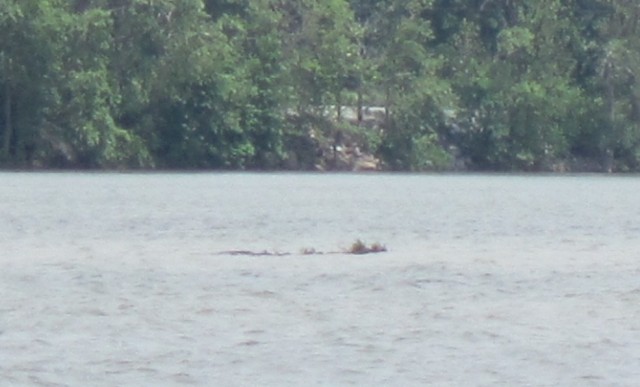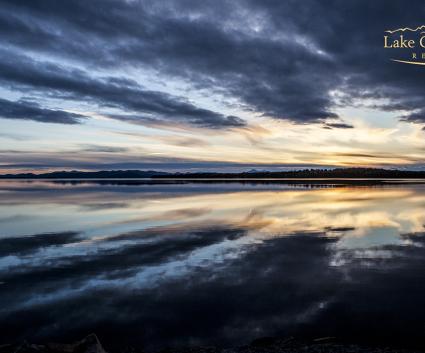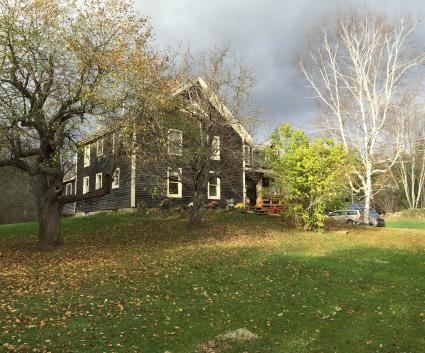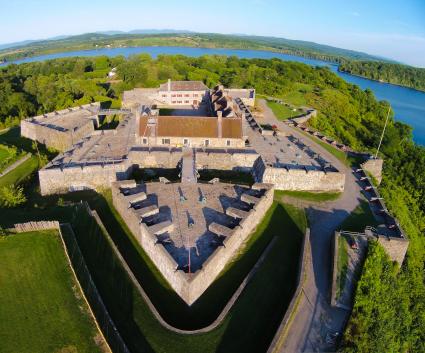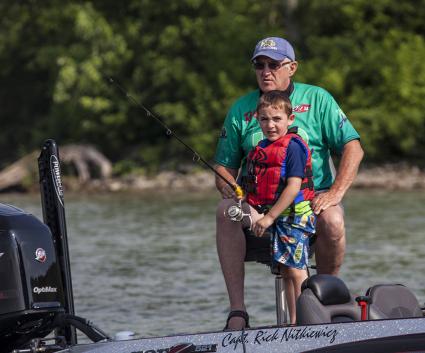You probably are aware of “Champ” the legendary sea monster of Lake Champlain, often dubbed the American Nessie, referring to Scotland’s Loch Ness Monster. Though no concrete evidence exists, no one has disproved him either. Hundreds of people, spanning several centuries, claim to have seen Champ, though descriptions do vary. Champ has been described as being anywhere from 10 to over 150 feet long. Some sightings claim to have seen humps, some claim Champ is snake-like. Some have seen a horse-like head, while others have seen horns or antlers. The famous Sandra Mansi photograph, taken in the late 1970s, provided a visual view of at least something and experts, who examined the photo, claimed it was not a fake.
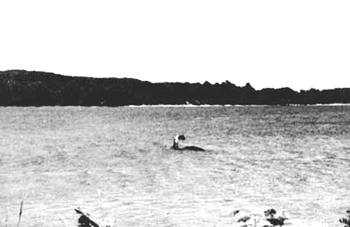
Applying Technology
During the 1970s and early 80s, Joseph Zarzynski formed the Lake Champlain Phenomena Investigation. This group made use of observation and sonar explorations in hopes of locating Champ. It is reported that though they did have some interesting sonar “blips,” no conclusive proof was produced.
The Mansi photo prompted additional sightings and aroused even more Champ seekers. It attracted the interest of cryptozoologists everywhere. Since then numerous individuals have made it their mission to solve the Champ mystery employing recent developments in technology. Last year, cryptozoologists Katy Elizabeth and Dennis Hall set up Champ Search to investigate the existence of the monster. They speculated that Champ may have a “voice.” Animals familiar to us, like bats and dolphins, emit a high pitched frequency, or “voice,” to determine the location of objects. This echolocation can be recorded. During the summer of 2014 Katy and Dennis set out to do just that using a hydrophone system. They made an audio recording of distinct clicking sounds that they speculate may have been Champ. Ms. Elizabeth admits that no one knows if Champ could echolocate, but she believes in the likelihood.
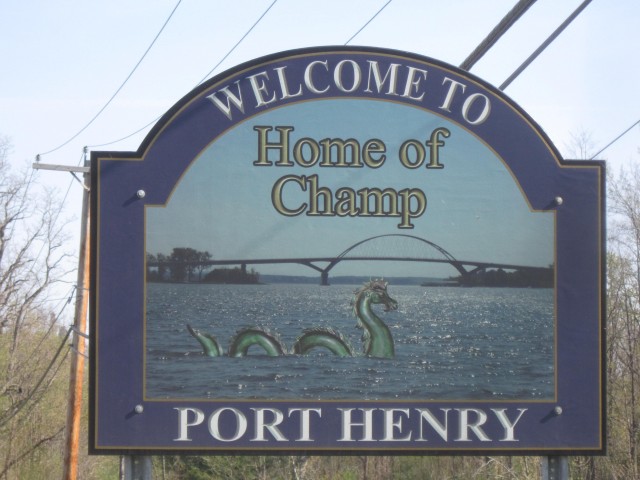
Lake Champlain is approximately 125 miles long and 400 feet deep at its deepest point. It is approximately 10,000 years old. The size, depth and age of the lake suggest to some that Champ could be a plesiosaur that escaped extinction. Others think Champ may be a zeuglodon, a primitive form of whale. Many of us have no idea what he is, but we sure would like to see him. Of the thousands of visitors that come into the Lake Champlain Visitors Center annually, many ask for the best spot to catch a glimpse of Champ. Who can blame them? Lake Champlain is so vast, approximately 450 square miles, where to begin? Let me provide you some key locations where you may begin your own Champ Challenge.
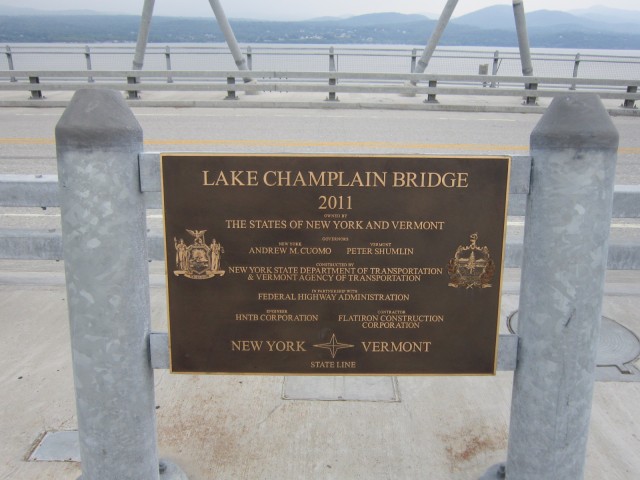
Home Port
Of the hundreds of sightings, one must note that a good share of them happened in, or near, Bulwagga Bay and the Village of Port Henry. The principle reason, no doubt, why Port Henry declares itself, Home of Champ. Sure, Champ has outings, day-trips and expeditions, hence sightings elsewhere, but Port Henry is definitely “home.” The protected Bulwagga Bay just to the south of Port Henry is quiet. Most of its shoreline is natural and undeveloped. It’s logical to assume Champ would appreciate the peace and quiet while resting at home. Bashful loons love it here too. The best view of lake waters against the shoreline of Port Henry, while still seeing a good share of Bulwagga Bay, is from atop the Lake Champlain Bridge. In fact, where the pedestrian sidewalk widens directly under the arch of the bridge (right at the New York and Vermont state lines) is known as the “Official Champ Viewing Platform.” While there, you will be able to identify a few of our Adirondack Mountains from this handy legend produced by Lakes to Locks Passage, our National Scenic Byway.

The Pier
A second top location to see Champ-infested water is from the Port Henry Pier. This concrete pier extends a few hundred feet directly into the lake. From its south side you can see all the Port Henry shoreline, the lake in the village's front yard, and the entire Bulwagga Bay. Note though, the southern end of the bay from the pier is quite distant, bring binoculars. Also bring a fishing pole to provide productive entertainment while you watch and wait. Some great catches are taken from this pier. It’s also a good site to work on your summer tan. Part way up the northern side of this pier is what’s known as the Port Henry Dog Beach. So, bring your best buddy and he/she can enjoy a refreshing swim while there. Find the pier on Dock Lane between the New York State boat launch and Champ Beach Park that has on-the-water camping sites and a great public swimming beach.
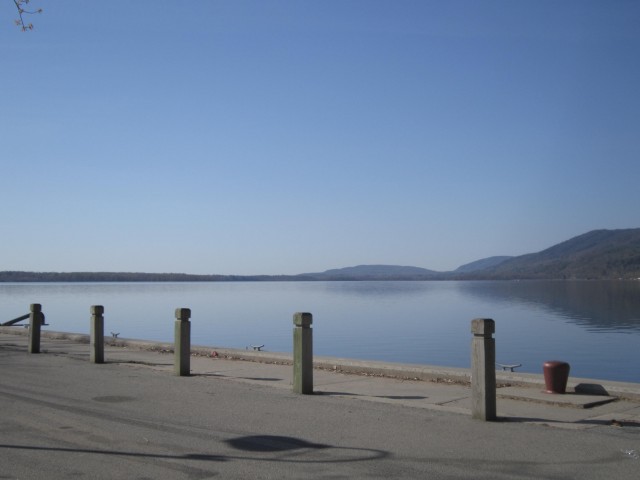
An Overview
For a larger perspective of the lake that includes Champ’s home port as well as a phenomenal view of southern Lake Champlain, hike CATS Coot Hill (Big Hollow) Trail. This is an amazing overlook of Bulwagga Bay, the Lake Champlain Bridge, more of the lake to the north, and the Green Mountains of Vermont. This is a tremendous vantage point, but you will need your binoculars here for sure; a spotting scope would be an asset. If it happens to be one of those crystal clear sunny days, you can also catch a glimpse of the White Mountains of New Hampshire way off to the east.
Best of luck on your search for Champ! Be sure to bring extra batteries for your camera and post your pictures or video on our Lake Champlain Region/Adirondack Coast Facebook page! Below is my own Champ photo.
